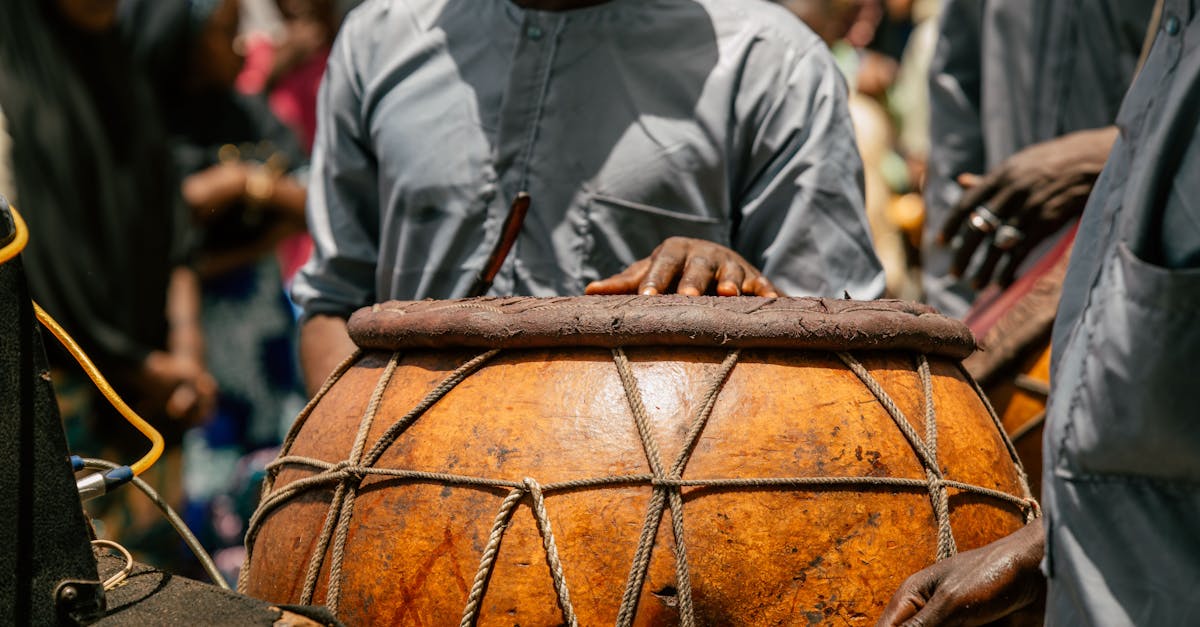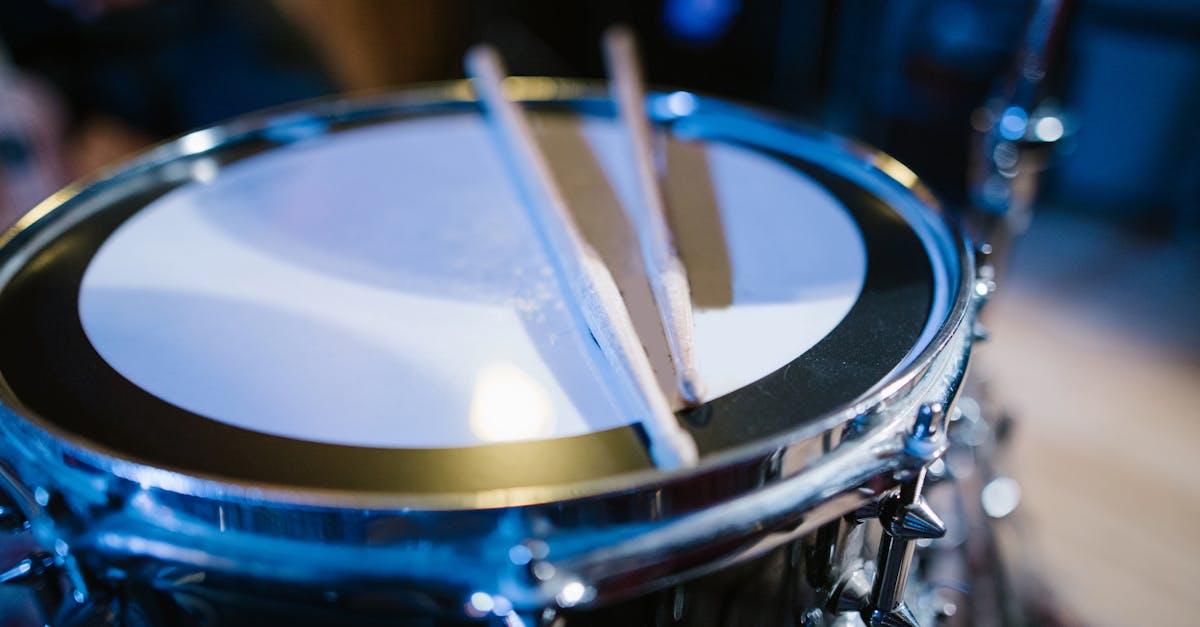Transcultural Tones Exploring The Mosaic Of World Music
Introduction: A Harmonious World
Music, an ancient art form, serves as a universal language that transcends geographic, cultural, and social boundaries. Its varied styles, rhythms, and melodies reflect the unique identity of regions and communities, creating a mosaic of sound and culture. From the heartbeat rhythms of Africa to the melodic tales of Europe, world music holds an extraordinary power to connect. As technology and globalization advance, these diverse sounds continually influence and blend, forming new transcultural harmonies. But what, precisely, constitutes world music, and how does it symbolize cultural exchanges? Let us embark on a journey to explore the fascinating tapestry of world music.
Advertisement
Africa's Rhythmic Pulse
Africa, often referred to as the "cradle of humanity," has given birth to some of the world's most influential musical styles. Encompassing a diverse range of cultures and languages, African music is known for its rhythmic complexity and improvisational nature. The use of percussive instruments like the djembe and balafon provides a dynamic beat that encourages dance and celebration. Polyphonic singing, as seen in South African mbube or Ghanaian highlife, highlights the continent's vocal prowess. Traditional African sounds have transcended national borders, influencing genres such as jazz, blues, and reggae. Even today, artists worldwide incorporate African beats into their compositions, showcasing its timeless appeal.
Advertisement
Asia's Melodic Landscapes
The rich tapestry of Asian music spans from the meditative sounds of Tibetan chants to the fast-paced rhythms of Bollywood. In China, traditional instruments like the guzheng and erhu resonate with storied pasts, playing pentatonic scales to evoke emotion. Meanwhile, Japan's traditional music, with its kotos and taiko drums, creates serene soundscapes that inspire tranquility. In India, music forms like classical Hindustani and Carnatic explore intricate ragas, enveloping listeners in spiritual and emotional journeys. These traditional elements often merge with contemporary beats, creating fusions like K-pop and J-pop that captivate global audiences. Thus, Asian music continues to evolve alongside its cultural heritage.
Advertisement
Europe's Musical Heritage
Europe, often a confluence of diverse musical traditions, has witnessed the evolution of music through the ages. From the structured harmonies of classical composers like Beethoven to the folk songs echoed in Irish ballads, the continent's music offers a compelling narrative of history and culture. Flamenco's passionate strumming and ballet's graceful compositions highlight diverse expressions of art. Traditional folk elements, when combined with electronic beats, gave rise to genres like Euro-pop and drum-and-bass. Additionally, Europe's music festivals serve as international platforms for cultural exchange, drawing artists worldwide to share their innovative interpretations of musical heritage.
Advertisement
Latin America's Vibrant Rhythms
Latin America pulsates with vibrant rhythms that tell tales of conquest, celebration, and liberation. From the harmonic strains of Brazilian bossa nova to the energetic pulse of Cuban salsa, Latin music reflects a colorful blend of influences. Indigenous, African, and European elements intermingle to create styles like samba, cha-cha, and tango. In recent years, reggaeton has made waves as a fusion genre, capturing global attention with its infectious beats. Festivals celebrating genres like mariachi and tango offer a glimpse into Latin America's passionate musical soul. Here, music mirrors life's joys and challenges, cultivating a soundscape that resonates deeply.
Advertisement
North America's Melting Pot
The music of North America serves as a testament to its multicultural layers, illustrating a wide array of genres born from rich cultural interminglings. Jazz, a unique American tradition, emerged as a blend of African rhythms and European harmonics. The development of blues, country, rock 'n' roll, and hip-hop further showcases the continent's dynamic musical landscape. Cultural icons like Elvis Presley, Madonna, and Aretha Franklin epitomize North America's continual reinvention. Moreover, today's indie-folk and electronic movements reflect growing trends of fusion and experimentation—breathing new life into traditional sounds as they reach global audiences.
Advertisement
The Middle East's Mesmeric Melodies
The Middle East boasts a rich auditory legacy, characterized by quarter-tone scales and intricate rhythms. The haunting wails of the oud and qanun reflect the region's arabesque allure. Traditional music, rooted in the cultures of countries like Egypt, Iran, and Turkey, is known for its complex musical forms, like maqams. Poetry and music intertwine in classical forms such as tarab and Sufi chants, invoking emotion and introspection. Recently, Middle Eastern pop and rap have gained traction, illustrating a shift as regional influences meet modern beats. By engaging with global platforms, these sounds echo across borders, offering mesmerizing narratives and cultural insights.
Advertisement
Fusions and Innovations
Globalization has accelerated the fusion of distinct musical traditions, creating crossover genres that pique the interest of audiences worldwide. The burgeoning electronic music scene integrates African drums and Indian sitars with contemporary beats to produce transcultural experiences. Artists are increasingly collaborating internationally, blending influences to access broader musical landscapes. This open exchange encourages cultural dialogue, challenging listeners to appreciate and interpret new sounds. Moreover, music platforms and streaming services democratize access, expanding listening opportunities beyond regional constraints. These latent sonic innovations signal a vibrant future, where traditional sounds transform into novel harmonies.
Advertisement
Challenges and Preservation
While the universal resonance of world music thrives, challenges exist in maintaining traditional art forms. Cultural preservation efforts fight against the homogenizing influence of mainstream music. Many indigenous sounds are endangered as contemporary genres overshadow them. However, initiatives by cultural preservationists and musicians aim to sustain diminishing traditions. By integrating modernity with cultural roots, musicians breathe fresh life into historical practices. Educational workshops and festivals promote this cause, celebrating diversity and authenticity. Motivated by both tradition and innovation, the community works to ensure that cultural heritage endures, adapting to the modern soundscape while retaining ancestral significance.
Advertisement
Conclusion: A Symphony of Cultures
World music, a constant testament to our shared humanity, transcends borders to reflect a mosaic of hues and harmonies. As we explore the rich diversity of global sounds, it becomes a path to cultural exchange and mutual appreciation. Various regions contribute distinctive narratives, each resonating with a unique story yet entwined in a universal symphony. Transcultural tones, born from collaboration and exploration, celebrate both innovation and tradition. In this age, music thrives not just as a reflection of individual regions but as a cohesive bond—an enduring reminder that despite our differences, harmony persists across a global stage.
Advertisement







